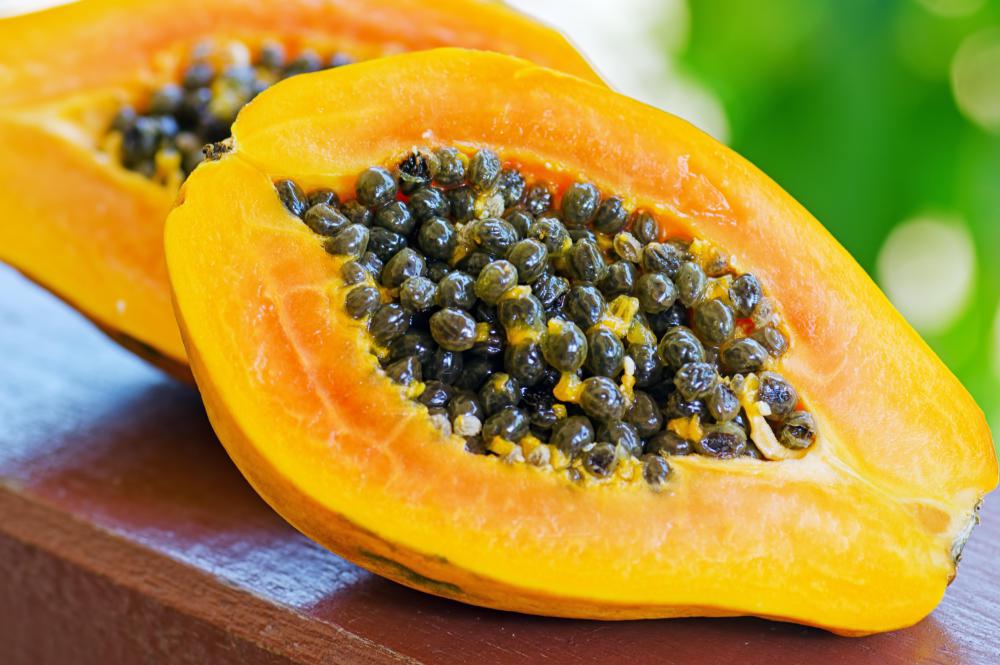At WiseGEEK, we're committed to delivering accurate, trustworthy information. Our expert-authored content is rigorously fact-checked and sourced from credible authorities. Discover how we uphold the highest standards in providing you with reliable knowledge.
What Is a Papaya Tree?
A papaya tree is a fruit-bearing tree found in tropical and subtropical climate zones. While originally native to Mexico, this tree is now grown throughout Florida, Hawaii, and Central America. It can reach heights of as much as 33 feet (10 m), and features a tall, single stem. The papaya tree produces large, sweet fruits that are consumed throughout the world, and also used in cosmetics and folk remedies. These fruits are traditionally called papayas or pawpaws, but may also be referred to by any number of local and regional names depending on the country.
There are three basic types of papaya tree, and understanding these types is critical to a successful harvest. Papaya trees can be male, female, or hermaphroditic, which means that they contain both male and female components. Only the female and hermaphroditic trees can produce fruit. Hermaphroditic varieties are capable of self-pollinating, while male or female trees must be pollinated via birds, butterflies, or other insects. Male and female species must be planted in relatively close proximity to ensure proper pollination.

Papaya trees thrive in warm climate zones, and prefer a temperature range of 70 to 90 degrees F (21 to 32 degrees C). They cannot tolerate freezing temperatures, but can also be damaged by temperatures exceeding the preferred range. The papaya tree is highly susceptible to wind damage, particularly when it is loaded with heavy fruit. It requires frequent watering, as well as adequate drainage and full un exposure. These trees should be planted 10 to 20 feet (3 to 6 m) apart to ensure they have adequate space to spread out.

The papaya tree consists of a tall single stem, with very large leaves that grow in a spiraling pattern around the stem. They generally require about three years to reach maturity and begin to produce fruit. These fruit grow in clusters within the large protective leaves of the tree.
Papayas or pawpaws can grow to roughly 14 inches (35 cm) in length, and feature a bell-shaped profile. They start off green, then change to yellow as they mature. The skin of the fruit is tough and leathery, while the flesh inside if sweet and golden like that of a mango. A very large cluster of seeds is situated within the center of the flesh, though these seeds are not generally eaten. Papaya can be consumed raw like many other fruits, or may be cooked in stews or other dishes.
AS FEATURED ON:
AS FEATURED ON:













Discuss this Article
Post your comments